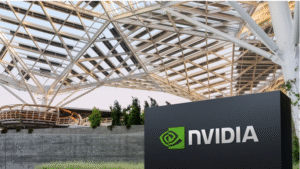NextDC (ASX:NXT): A good FY26 AI opportunity on paper, but still some way from profitability
![]() Nick Sundich, September 1, 2025
Nick Sundich, September 1, 2025
One of the last companies to report its FY25 results was NextDC (ASX:NXT), reporting after the bell last Thursday. It is the biggest data centre stock on the ASX and the second biggest in Oceania after Equinix. It has had an unparalleled record of success in the last decade, growing its market cap from $80m to over $9bn!
But will NextDC’s run continue? The company will tell you it can because it is at the forefront of the AI boom. We get it, data centres will play an important part with some AI applications. Nonetheless, the company is no longer cheap and it is still some way from profitability – in fact, it went backwards in FY25.
The question facing investors is will the short-term pain make for long-term gain?
Who is NEXTDC?
NextDC was founded in 2010 by Bevan Slattery and has a portfolio of 17 data centres around Australia. Data centres are buildings hosting applications that store and share application and data. If you’ve used technology of any kind (whether computers or even mobile phones), you’ve likely been assisted by a data centre without even knowing it.
It listed in 2010, raising $40m at $1 per share in a deal valuing the company at $80m. But now, the share price is over $14. That is impressive enough, but doesn’t tell the full story. With all the capital raisings the company has done over the years (taking its shares on issue from 80m to over 640m), those original shares are only worth 12.5c today, representing over 100x growth over 12 years.

NextDC (ASX:NXT) share price chart, log scale (Source: TradingView)
NEXTDC listed early in its life because of the extreme amount of capital needed and difficulty of sourcing it from private markets back then. Some of it was funded by Slattery’s sale of Pipe Networks for $373m in 2010, but it needed further capital.
What are the Best ASX Stocks to invest in right now?
Check our buy/sell tips
A great growth story
While Slattery departed not long after listing, it has been led by Craig Scroogie ever since. It was clear data centres were going to be needed in the future, but it was only the major telcos that had them. The company betted that businesses and their customers needed and wanted even more capacity. Despite the upfront capex, data centres can generate revenue fast once operational.
Fast forward to today and NEXTDC made $350.2m in net revenue in FY25 – a figure up 14% from FY24, alone with $216.8m EBITDA (up 6%). It has a Forward Order Book of 133.9MW, of which 85% will translate into revenues in the next 2 years. This was higher than the ~87MW figure 12 months ago.
The company made a post-tax loss of $60m, $16m higher than the $44.1m in FY24 which was double the year prior. This is because it has been building data centre capacity. Last year, we said it is hardly an emergency considering it had $1.2bn in cash, $2.7bn in total liquidity and gearing of 3.4%. Now, it has just $244m in cash and its gearing is 18%. Clearly it is still not an emergency, but not in as good a position as it was 2 months ago. The company has claimed to have secured a new $5bn facility but has not drawn it down just yet, so it is not yet reflected on the balance sheet.
For FY26, the company has guided to $390-400m net revenue (the mid point would be 12% growth) and to $230-240m EBITDA (8% growth). It anticipates $1.8-2bn in capex, up from $1.7bn in FY25. Consensus calls for $499.5m total revenue (vs $430.9m the year before) and $235.3m EBITDA. Then $623.9m revenue and $307.4m EBITDA in FY27.
You can see FY26 may be another year of investing, but the pay-offs will come in FY27 – at least at the top line. Consensus estimates expect similar losses for the next 2 years but profitability will come in FY29. The mean target price is $19.38, drawn from 16 analysts but the lowest is $15. They all expect share price growth, they just disagree on the extent. It has an EV/EBITDA of 40.3x.
A COVID beneficiary that’s betting the benefits will continue
NEXTDC was in a good space during the pandemic due to the rise in remote working. So what? Well clearly you don’t just want all your data sitting in an office somewhere. And businesses have enough worries as it is without having to worry about infrastructure and whether or not it can operate. But the company is betting that the trend is not slowing down.
In FY24, it raised over $600m for new data centres in Auckland and Kuala Lumpur. This represented the company’s first significant investment outside Australia and into the high-growth APAC region. These will open during FY26.
It is building its first in Singapore and Japan too, but they’ll be a while yet – Tokyo will be in 2030.
Of course AI will mean the demand for data centres will grow. Yes, much will be done ‘on edge’ (i.e. on devices) but data centres will have a role to play in guiding larger data-heavy uses. Cloud and AI represent 86% of Contracted MW by customer category .
There are risks, but are they worth it?
We would note a couple of things.
First, NEXTDC is not cheap. As we mentioned trades >40x EV/EBITDA for the next couple of years. The first EPS positive year forecast is FY29 and the P/E for this year is a staggering 56.2x.
Second, there are a number of risks, including data centre interruption or outages, key customer contracts not continuing and the company’s ability to manage its debt. The latter is a key concern for us.
Third, it is inevitable that more capital raisings will be required unless or until the company gets to a point where it is content with the number of data centres it has and decides to ‘sit back’ regarding its expansion plans. The company is planning a Joint Venture for up to $15bn to be utilised over the next decade and we should expect to hear more in the net 12-18 months. Can’t fault the company for being honest on its requirements, but it remains to be seen if it can raise that money.
Our view
Although this call could come back to bite us, we wouldn’t invest in it right now. We know data centre demand is only going in one direction, but we are not so sure NEXTDC is the best way to pounce on this demand. Maybe Equinix is, but that’s a topic for another article.
The bottom line is that NEXTDC is undoubtedly in a good industry and has terrific prospects, but it is not profitable and will inevitably need future cash injections down the track to keep growing to scale and to capitalise on the opportunity it has.
This being said, it is certainly a good trading opportunity as we enter a new financial year and is better positioned to capitalise on the demand for data centres than any of the penny stocks that only have one or two facilities (or perhaps even none).
Blog Categories
Get Our Top 5 ASX Stocks for FY26
Recent Posts
NVIDIA’s Blackwell Chips Ignite Record Demand in Q3
NVIDIA’s Blackwell Surge Tech investors and growth-focused funds will be breathing a sigh of relief after NVIDIA (NASDAQ: NVDA) delivered…
REA Group (ASX:REA): Here’s why it succeeded over Domain Group at home, but hasn’t done that well abroad
REA Group (ASX:REA) is best known in Australia as the owner of realestate.com.au. For so long, the company (which is…
Here’s why companies undertake demergers and spinoffs, and some of the most famous deals in the last decade!
Investors often get themselves into frenzies over M&A deals (or just speculation of them), but demergers and spinoffs get less…



